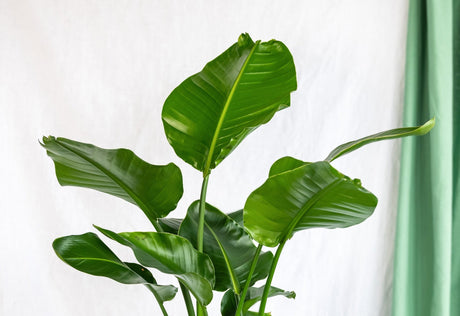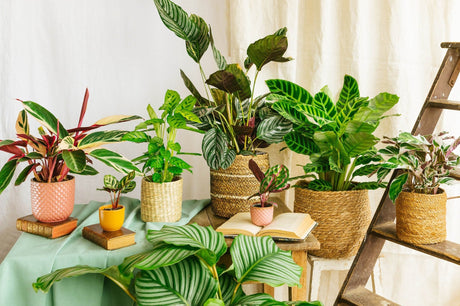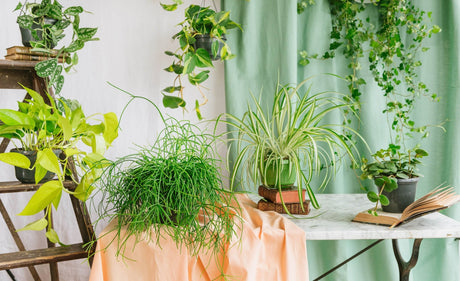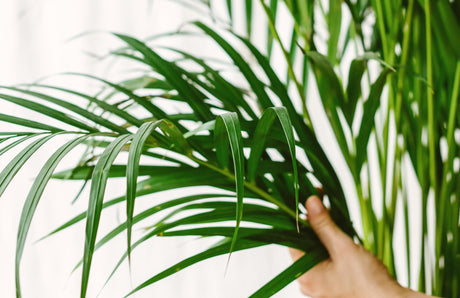The Ficus, a plant with multiple facets, embodies beauty and sophistication in the world of horticulture. Among its most captivating variants, we highlight two amazing varieties of this plant: Ficus Bonsai and Ficus Ginseng Microcarpa .
These two varieties illustrate the subtle art of growing Ficus, combining the aesthetics ancestral of bonsai to the presence elegant and energetic of Ginseng Microcarpa.
- Ficus Ginseng Microcarpa, also known as Ficus ginseng, is a houseplant highly prized for its beauty exotic and its characteristics unique. Native to Asia from South-East, this plant belongs to the Moraceae family.The Ficus Ginseng Microcarpa is distinguished by its trunk thick and bulbous, which gives it a appearance similar to that of a bonsai. Its foliage lush is composed of small leaves oval and glossy, which can be green dark or green light depending on the variety. These leaves create a striking contrast to the trunk and add a touch of sophistication to any interior.
- The Ficus Bonsai, a variant miniature of a tree majestic, is one of the jewels of the indoor plant collection. With its delicate leaves and its silhouette artistic, the Ficus Bonsai captivates the eyes and brings a touch of elegance to any interior space. This plant originating in tropical and subtropical regions, is a shrub belonging to the Moraceae family. Its small size and its delicate appearance make it a plant of choice for bonsai lovers. Its dark to light green leaves add a unique dimension visual to this miniature specimen.
1. Watering the Ficus
The Ficus needs moderate and regular watering. Wait until the soil is slightly dry in surface before watering again. Avoid watering every day, as this can over-wet the soil and harm the plant's roots.
The requirements in water of the Ficus can vary depending on the seasons and conditions environmental. During the period of active growth (spring and summer), it may require more frequent watering, while in autumn and in winter, you can reduce the frequency of watering because the plant is less active.
Tip: Insert your finger into the ground to a depth of approximately 2 to 3 cm . If the soil is dry at this depth, it is usually time to water it.
2. Watering techniques
Spouted Watering Can
Water the plant slowly and evenly to allow the soil to absorb water adequately. Avoid watering heavily all at once, as this can lead to waterlogging and promote root rot.
Drench
Submerge the jar in a container of water. Let it soak for a few minutes, then remove it and let the excess water drip off. This method allows the plant to hydrate more evenly and promotes good drainage.
3. The exhibition of the Ficus
The Ficus likes light, but prefers exposure indirect. Place it near a window where it will receive bright light bright , but avoid direct rays from the sun, as they could burn the leaves sensitive of the plant. A window facing east or west is often a good choice.
4. When should I repot my Ficus?
The ideal time to repot your Ficus is usually at the early of spring, when the plant enters its period of active growth. Here are some pointers to know when repot your Ficus:
Excessive rooting
If you observe that the roots are starting to come out of the current pot's drainage hole or wrap around the bottom of the pot, it may be time to repot.
Slowed growth
If your Ficus is showing slow growth or showing signs of lack of space for its roots, repotting could be beneficial to stimulate its growth.
Increased watering frequency
If you have to water your plant much more frequently than usual because the soil dries out quickly, this may be a sign that the plant needs a bigger pot.
5. What fertilizer should I use for my Ficus?
To fertilize your Ficus, it is recommended to use a fertilizer balanced especially designed for plants indoor. Here are some tips for using fertilizer:
Application frequency
During the period of active growth of your plant (in spring and summer), you can apply the fertilizer every two to four weeks. On the other hand, in fall and winter, when the plant enters dormancy, reduce the frequency to once every two months or so.
Dilution
It is best to dilute the fertilizer in water according to the manufacturer's instructions before applying it. A dilute solution allows easier absorption and reduces the risk of over-fertilization.
6. How do I multiply my Ficus?
You can propagate your Ficus using two main methods: the cutting of leaf and the cutting of root aerial.
The leaf cutting
Leaf cutting is a method of propagating Ficus that involves taking a healthy, mature leaf from the parent plant. Cut the leaf and place it in a glass of clean water. Make sure only the stems are in the water, the leaves should not touch the water to avoid rotting.
The aerial root cutting
Air root cutting is a method of Ficus propagation that involves taking a healthy, mature aerial root from the parent plant. Carefully cut the aerial root with a clean knife. Place the cut aerial root in a glass of clean water, making sure the cut part is submerged in the water.
7. Diseases of Ficus
The Ficus is generally a plant robust, but like all plants, it can be subject to certain diseases. Here are some common diseases that can affect the Ficus:
Root rot
Overwatering or poorly drained soil can lead to root rot. Symptoms include yellowing of leaves, wilting and drooping of the plant.
Cochineals
Mealybugs are pests that suck sap from leaves, causing white or cottony spots on the leaves. You can try to get rid of them by gently wiping the leaves with a cotton ball soaked in alcohol or by using an appropriate insecticide.
Thrips
Thrips are small black or brown insects that can cause silvery spots on leaves and warping of new growth. You can try to control them with a specific thrips insecticide.
Mildew
Downy mildew is a fungal disease that causes black spots on the leaves of Ficus trees. Be sure not to water the leaves of the plant to prevent the spread of mildew.
Red Spiders
Red spider mites are tiny pests that feed on leaf sap, causing leaves to turn yellow and dry. You can try to eliminate them by using a water jet or an appropriate insecticide.
8. Delivery and receipt of your plant
Have you just adopted a plant
- Is your plant dry? Bathe her for ten minutes.
- Is your plant wet? Let the potting soil dry.
- Should I repot my plant immediately? No ! Wait until next spring or for signs that your plant needs repotting.






